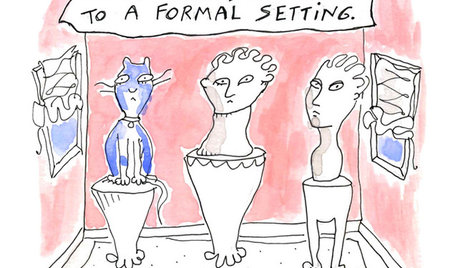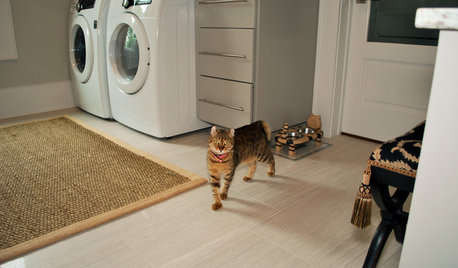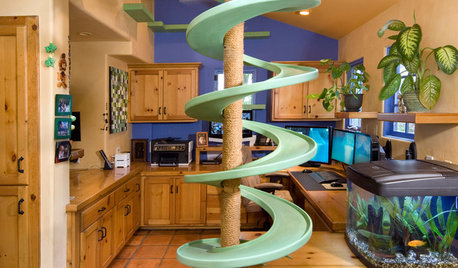Looking for a cat id
ronkw
12 years ago
Related Stories

FUN HOUZZGeek Lab: How to Build a Steampunk Cat Transit System
Give your kitty another avenue for fun with a tubular walkway system that lets him go his own way
Full Story
PETS12 Stylish Solutions for Ugly Cat Furniture
Bland beige post unhappily marking your living room territory? Scratch that with rakish kitty condos, perches and staircases
Full Story
PETSSo You Want to Get a Cat
If you're a cat lover, the joys outweigh any other issue. If you haven't lived with one yet, here are a few things to know
Full Story
PETS10 Tips for Keeping Indoor Cats Healthy and Happy
It's National Cat Day: Ask not what your cat can do for you (because it will ignore you) but what you can do for your cat
Full Story
PETSHouzz Call: Send in the Design Cats
Post your best photo of your cat at home, in the garden or with you in your studio. It could be published in a featured ideabook
Full Story
MOST POPULAR7 Ways Cats Help You Decorate
Furry felines add to our decor in so many ways. These just scratch the surface
Full Story
SHOP HOUZZHouzz Products: Create a Cat Heaven at Home
Show kitty you care and keep your style too with fun and cozy cat beds, perches, trees and decor
Full Story
HOUZZ TOURSHouzz Tour: For the Love of a Cat in Philadelphia
Pet-friendly features integrated into a mod, eclectic and colorful home mean everyone in the family is happy
Full Story
THE HARDWORKING HOMEA Laundry Makes Room for a Diva Cat
A South Carolina laundry room was designed to be sophisticated and functional, but when a kitten arrived, whimsy emerged
Full Story
PETSHouzz TV: Watch These Rescued Cats Make a House Their Playland
Spirals, catwalks, tunnels and platforms create a superhighway inside this home in Southern California
Full Story






MissButterfly
ronkwOriginal Author
Related Professionals
Andover Landscape Contractors · Gainesville Landscape Contractors · Lorain Landscape Contractors · Royal Oak Landscape Contractors · York Landscape Contractors · Clermont Fence Contractors · East Haven Fence Contractors · Fountain Fence Contractors · Kendall Fence Contractors · Plainfield Fence Contractors · Queen Creek Fence Contractors · Kingsburg Fence Contractors · North Aurora Window Contractors · Sugarland Run Window Contractors · Tamarac Window ContractorsMissButterfly
susanlynne48
MissButterfly
MissButterfly
ladobe
MissButterfly
ladobe
MissButterfly
MissButterfly
Ament
ladobe